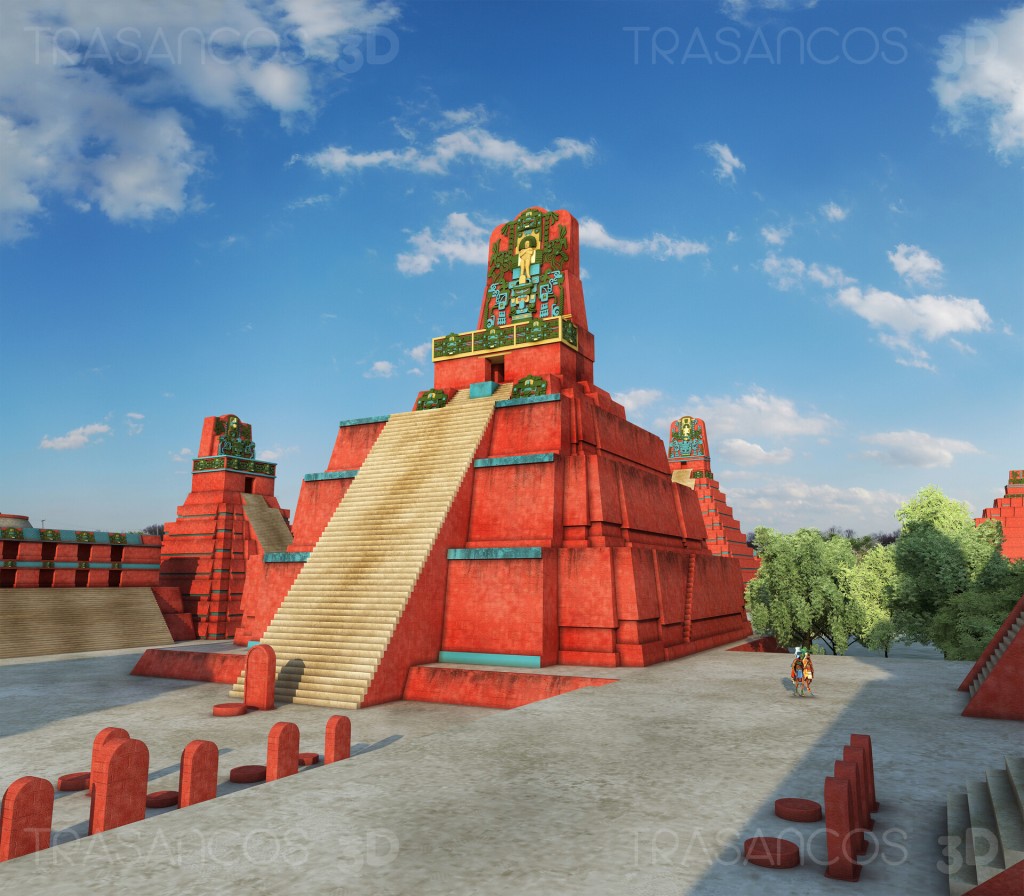The Classic Period is considered a time of booming change in Mesoamerica. Distinct from the Preclassic and the later Postclassic in many, many aspects, it represents a period of time in which civilizations flourished and grew in unprecedented ways.
The dates given for the Classic period in most of Mesoamerica are from AD 250 to AD 900. However, the date is altered for Central Mexico, which sees significant urban development beginning around AD 150 at the site of Teotihuacan, which we will discuss more in detail in a couple of weeks.
This period saw increased literacy and widespread use of writing in many different forms and complexities. Let’s take a look at some of the other significant ways in which Mesoamerica changed during the Classic Period.

Social Change
The greatest indicator of social change during the Classic Period is a sudden boom in population. Some areas doubled and tripled in population, and many (if not most) of the archaeological sites that have been excavated belong to the Classic Period. Cities grew rapidly to accommodate the growing population, which led to competition and warfare between regions.
The Classic Period also saw the consolidation of elite classes. While the Preclassic Period did give rise to distinctions between classes, it was not until the Classic Period that these classes appear to have been firmly established and represented in art and archaeological remains. We see elite residences built in the center plazas of cities, and richly attired kings carved into stone monuments, suggesting that their prominence and political control was growing. However, it was not just rulers who were considered important. Priests and warriors were also elevated to high status in Mesoamerican societies, based on their ability to bring abundance and victory to the people.
Technological Advances
Many technologies remained the same during the Classic Period; metal, for example, would not be worked on a large scale until the end of the Classic Period, and agricultural practice did not vary at all from its Preclassic predecessor.
However, there were significant technological changes that characterize the Classic Period. Stone buildings were built in high quantities, creating a sharp contrast to the common Olmec-style mounds of earth from the Preclassic. These stone buildings were covered in plaster and then painted in different colors, most frequently red and white, and occasional decorations of yellow, blue-green, and lighter shades of red or pink.
Another significant advancement was the use of molds to create incense burners, figurines and other pottery ware in bulk. Teotihuacan has been the source of many different molds, which we will see in detail in the coming weeks. The increased quantity of ceramic and figurines was astounding, and has facilitated the creation of a chronology for the Classic Period that archaeologists can use to date their finds.
Artistic Style
With all of this change, it is only natural that the artistic style would adapt to express it. The development of the Maya corbelled vault arch is one of the most distinctive artistic and architectural advancements of the Classic Period. This arch is formed by setting layer after layer of stone down, with a slight overlap so that the two edges slowly come together and a capstone can be placed above it. The corbelled vault has become so distinctive of this culture that it is also known as the “Maya arch.”
Stelae, or monumental pillars of carved stone, are another characteristic of this period. They were frequently engraved with inscriptions, representations of rulers, court scenes, or deities. Rulers would commission these stelae in order to show their influence and wealth. Although stelae did occur in the Preclassic period, they became more and more numerous during the Classic period.
Maya art frequently employs these stelae. However, Maya art encompasses much more than this. For a discussion on Maya art, check out the following blog posts:
- Painting and Writing in Mesoamerica
- Maya and Animals
- Classic Maya Wahy: Denizens of the underworld and personified disease
- Featured Site: Piedras Negras
The art of the great city of Teotihuacan strongly influenced the art of Mesoamerica. We will discuss this more in detail in a couple of weeks, but in the meantime, you can read more about it in these blog posts:
For more posts about Mesoamerican art in general, you can read the following blog posts:
